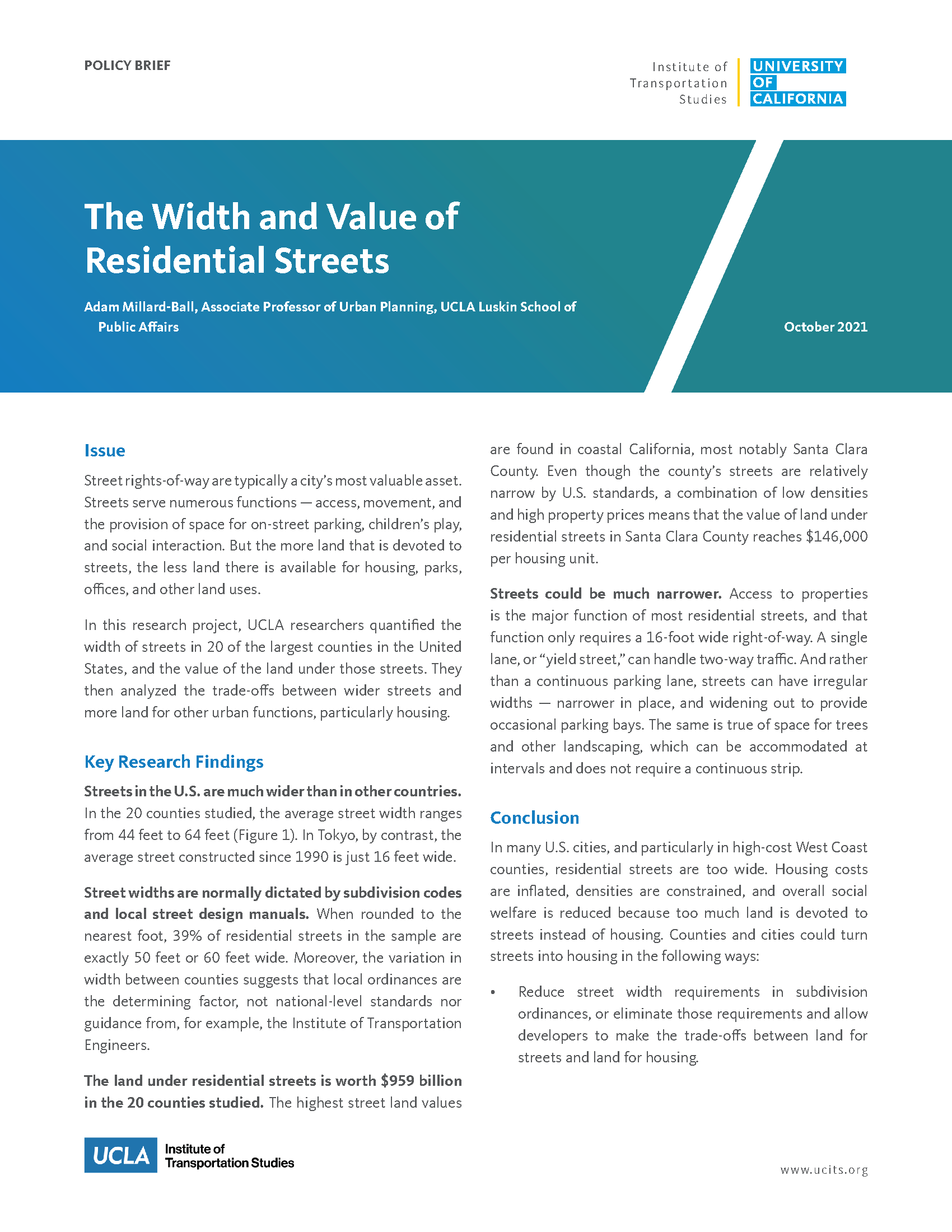Date: October 19, 2021
Author(s): Adam Millard-Ball
Abstract
Street rights-of-way are typically a city’s most valuable asset. Streets serve numerous functions — access, movement, and the provision of space for on-street parking, children’s play, and social interaction. But the more land that is devoted to streets, the less land there is available for housing, parks, offices, and other land uses. In this research project, UCLA researchers quantified the width of streets in 20 of the largest counties in the United States, and the value of the land under those streets. This research found that streets in the U.S. are much wider than in other countries. Street widths are normally dictated by subdivision codes and local street design manuals. The highest street land values are found in coastal California, and streets could be much narrower.
About the Project
Street rights-of-way are typically a city’s most valuable asset. Streets serve numerous functions — access, movement, and the provision of space for on-street parking, children’s play, and social interaction. But the more land that is devoted to streets, the less land there is available for housing, parks, offices, and other land uses. In this research project, UCLA researchers quantified the width of streets in 20 of the largest counties in the United States, and the value of the land under those streets. This research found that streets in the U.S. are much wider than in other countries. Street widths are normally dictated by subdivision codes and local street design manuals. The highest street land values are found in coastal California, and streets could be much narrower.


